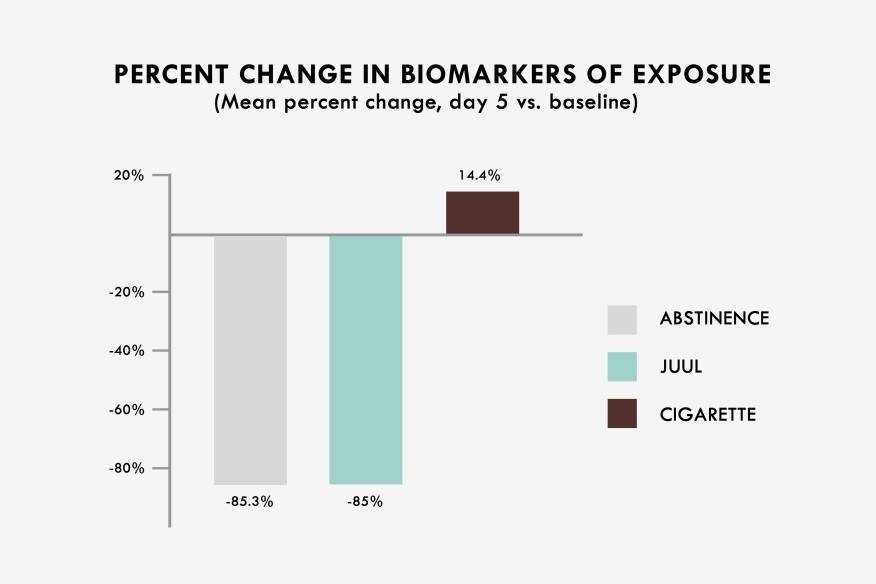A Switch to Vaping Reduces 8 Biomarkers of Smoking As Much As Abstinence
A randomized clinical study adds to the evidence that e-cigarettes are far less hazardous than the conventional kind.

A randomized clinical study that was discussed at a conference on Saturday found that smokers who switch to Juul e-cigarettes see the same reductions in biomarkers of exposure to hazardous chemicals as smokers who quit without vaping. The study, sponsored by Juul Labs as part of the documentation it will need for the Food and Drug Administration's approval to keep its products on the market, provides further evidence that vaping dramatically reduces the health risks that smokers face.
The researchers randomly assigned 90 smokers to vape instead of smoking, to stop smoking without vaping, or to continue smoking. After five days, the urine and blood levels of eight biomarkers of exposure (BOEs) were reduced by 85 percent in the vaping group, compared to 85.3 percent in the abstinence group. The difference between the two groups was not statistically significant. BOE levels in the group that continued to smoke, meanwhile, were 14.4 percent higher than the baseline results (which were obtained from all subject after 12 hours of abstinence at the beginning of the study).

"The equivalent reductions in these specific cigarette-related biomarkers across the groups who abstained from smoking and those who used JUUL products reaffirms the role vapor products can have for the adult smoker," Juul Labs CEO Kevin Burns said in a press release. "Although addictive, nicotine is not directly responsible for the cancers that are commonly associated with cigarette use; rather it is the harmful constituents that are present in combustible smoke. The more that can be done to eliminate cigarettes, the greater the impact will be on the public health. We are committed to conducting rigorous, scientific research as we contribute to the ongoing dialogue regarding vapor products, and look forward to sharing additional research with the medical, scientific, and public health communities."
Despite findings like these, anti-smoking activists and public health officials in the United States continue to imply that e-cigarettes are only a little less dangerous than the conventional kind, that the jury is still out on whether they are any safer at all, or even that they have been shown to be just as dangerous. Boston University public health professor Michael Siegel notes one recent example: The Pennsylvania Department of Health falsely claims that "e-cigarettes, also known as e-cigs, e-hookahs, mods, vape pens, vapes or ENDS, are not safer than other tobacco products for youth."
With such flat-out lies passing for medical advice, it is no wonder that Americans are confused about the relative hazards of smoking and vaping. In one survey, the share of adults who incorrectly said vaping is as harmful as or more harmful than smoking tripled between 2012 and 2015, from 13 percent to 40 percent. In a 2018 Harris poll, 43 percent of adults erroneously thought e-cigarettes are more harmful than the combustible, tobacco-containing kind. This kind of misinformation, to the extent that it discourages smokers from switching to vaping, can be deadly.


Show Comments (18)